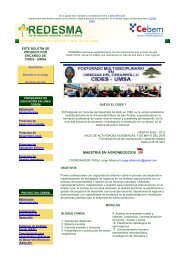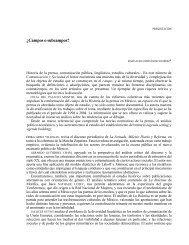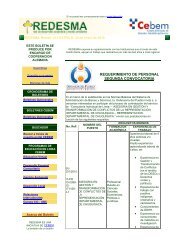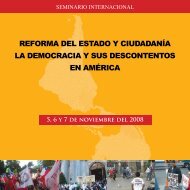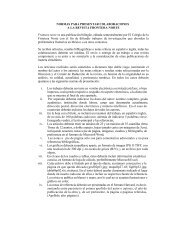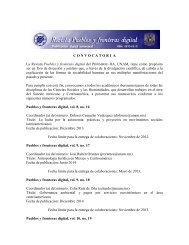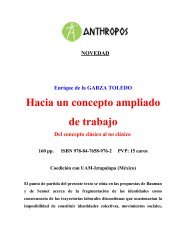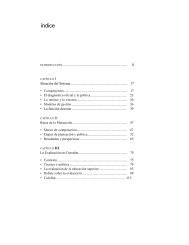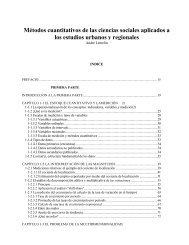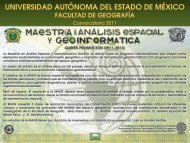RC21 Call for Papers XVII ISA World Congress of Sociology ...
RC21 Call for Papers XVII ISA World Congress of Sociology ...
RC21 Call for Papers XVII ISA World Congress of Sociology ...
- No tags were found...
You also want an ePaper? Increase the reach of your titles
YUMPU automatically turns print PDFs into web optimized ePapers that Google loves.
<strong>RC21</strong> <strong>Call</strong> <strong>for</strong> <strong>Papers</strong><strong>XVII</strong> <strong>ISA</strong> <strong>World</strong> <strong>Congress</strong> <strong>of</strong> <strong>Sociology</strong>, Gothenburg, Sweden, July 11-17, 2010.The call <strong>for</strong> papers is listed at <strong>ISA</strong> web page (http://www.isasociology.org/congress2010/rc/rc21.htm). It is also listed athttps://www.msu.edu/user/fujitak/SessionsGothenburg2010.pdfYour paper abstract including paper title, short description (within 200 words), andname, affiliation, country and email address as paper author(s) should be sent tosession organizers as well as conference coordinators (Fernando Diaz OruetaFernando.diaz@ua.es and Kuniko Fujita fujitak@msu.edu) by October 31, 2009.Participants are limited to only one paper presentation within <strong>RC21</strong> program. Anyindividual may participate in two sessions. Session organizers can present their papersonly outside their own sessions.<strong>RC21</strong> travel grants <strong>for</strong> Gothenburg will be announced in January 2010.1. <strong>RC21</strong> Plenary: Additional Session on <strong>Congress</strong> ThemeGlobal Financial Crisis, Regime Shifts and New Challenges <strong>for</strong> Urban TheoryKuniko Fujita (Michigan State University, USA) fujitak@msu.eduFernando Diaz Orueta (University <strong>of</strong> Alicante, SPAIN) Fernando.diaz@ua.es2. New Challenges <strong>for</strong> Social and Urban Theory: the ‘Credit Crunch’ and BeyondChris Pickvance (University <strong>of</strong> Kent, UK) C.G.Pickvance@kent.ac.ukThis is intended as a wide-ranging session. It is particularly provoked by the sub-primecrisis, ‘credit crunch’ and subsequent recession, and government responses to these,but events between now and summer 2010 may bring to the <strong>for</strong>e other events, playersand issues. The emphasis <strong>of</strong> this session is not so much on the details <strong>of</strong> the subprimecrisis, or on housing processes as such, but on theories <strong>of</strong> how capitalist economieswork, how states act, the significance <strong>of</strong> economic and political ‘globalization’, etc.My belief is that the ‘events’ <strong>of</strong> 2008 challenge prevailing theories about whatcapitalist states can do, how the international economy works, and how the finance andhousing sectors work, and what role cities play on these wider processes.They will also lead to a restructuring <strong>of</strong> economic and political systems nationallyand internationally so an understanding <strong>of</strong> what the issues are is particularly critical.1
We are living through a rare moment when states are making things up as theygo along. This moment provides an opportunity <strong>for</strong> a new politics based on seizingopportunities which were previously thought to be closed <strong>of</strong>f by ineluctable trends.Among the issues which merit attention are:A. the national and international context- the role <strong>of</strong> housing in the economy (including the subprime crisis)- the role <strong>of</strong> credit institutions in the economy- the international ramifications <strong>of</strong> the above (effects on economic globalization,repercussions on the Chinese and Indian economies and on the South, the role <strong>of</strong>China as creditor to the US, etc)- government policies (bail-outs, fiscal expansion, infrastructure spending, guarantees tosavers, etc)- a reversal <strong>of</strong> previous dogmas about capitalist state policies? Howeffective? Does effectiveness on the finance sector and the economy generally matteror is symbolic effect more important? A rehabilitation <strong>of</strong> Keynesianism? Stateindebtedness as a new problem.- the problem <strong>of</strong> ‘regulation’ (limits <strong>of</strong> national regulation, necessity <strong>of</strong> nationalregulation, tax havens and the corporate welfare state, what would better regulationlook like?, what’s wrong with state ownership <strong>of</strong> banks?)- demonology: placing blame <strong>for</strong> the crisis (can bankers be blamed? religiousinterventions)- effects on party politics: pull together, or a chance <strong>for</strong> new directions- a quiescent public? Individualized responses or collective responses outside partyframeworks too?B. the urban context- New challenges <strong>for</strong> local governments/urban managersFiscal policyDrawing the line a) between public and private responsibility and b) betweencharitable/voluntary and private providers <strong>of</strong> public servicesHouseholds as participants or recipients- New challenges <strong>for</strong> households and <strong>for</strong> grassroots groupsC. environmental effectsDo solutions to the credit crunch support or contradict sustainable policies?3. “Creative Cities” after the Fall <strong>of</strong> FinanceMichael Indergaard (St. John’s University, USA) indergam@stjohns.eduAndy Pratt (London School <strong>of</strong> Economics, UK) a.c.pratt@lse.ac.ukTom Hutton (University <strong>of</strong> British Columbia, CA) thutton@interchange.ubc.caThis session explores whether global financial crisis is changing prospects and policies<strong>for</strong> cultural and knowledge ensembles in different urban and national contexts. Thecrisis <strong>of</strong> finance and the neoliberal order that supports it, calls into question creative citydiscourses (Florida, 2002) which presume that market processes can provide a basis<strong>for</strong> urban innovation and prosperity. Even be<strong>for</strong>e the crisis, the sustainability <strong>of</strong> creativesector development was problematic in settings dominated by booms in finance andreal estate (e.g., New York and London). While some creative segments tapped theextension <strong>of</strong> upscale market niches, consumption spaces and housing, others weredisplaced or found their development stunted. Given this contradictory relationship, is2
the meltdown <strong>of</strong> finance generating hardships or relief <strong>for</strong> cultural and knowledgeensembles or perhaps even new opportunities <strong>for</strong> development? Is support <strong>for</strong> thecreative sector increasing, as public entities perceive new imperatives to diversify theeconomic base? Is crisis altering how policy makers perceive and value particularsegments within cultural production chains? Are cities from outside the neoliberalheartland now supplying policy models? What now should theorists make <strong>of</strong> thecultural/creative economy? Is it an epiphenomenon <strong>of</strong> over-inflated finance or is it takingon a more ‘basic’ position in cities as a fully-fledged advanced producer service?4. Cities and the Housing Boom/Bust: Joint Session with RC43 (Housing)Manuel Aalbers (University <strong>of</strong> Amsterdam, THE NETHERLANDS)m.b.aalbers@gmail.comKen Gibb (University <strong>of</strong> Glasgow, UK) k.gibb@socsci.gla.ac.ukHousing markets are highly dependent on the economic per<strong>for</strong>mance <strong>of</strong> cities. Yet, localhousing market boom/bust is shaped not only at the city level, but also at the nationaland increasingly as the financial crisis <strong>of</strong> 2007-2009 makes clear at the global level.Local, national and global factors interact to produce housing booms/busts. A housingboom may be seen as a sign <strong>of</strong> economic vitality <strong>of</strong> a city, but also implies anaf<strong>for</strong>dability crisis <strong>for</strong> large parts <strong>of</strong> the urban population. A housing bust may beconnected to an economic downturn and may result in redundant housing in one cityand only a pause in increasing house prices in another.Possible topics <strong>for</strong> this session include, but are not limited to:The local politics <strong>of</strong> housingExamples <strong>of</strong> housing boom/bustAnalysis <strong>of</strong> how local, national and global factors interact in shaping housing marketsLocal housing effects <strong>of</strong> the global financial crisisBooming neighbourhoods in a busting cityBusting neighbourhoods in a booming cityThe real estate network as a growth machine5. Sustainability and Learning Communities, Cities and RegionsAlun Morgan (London South Bank University, UK) morgana@lsbu.ac.ukJesus Blas Vicens Vich (University <strong>of</strong> Barcelona, SPAIN) jvicens@ub.eduThe challenge <strong>of</strong> achieving sustainability in the twenty-first century will demand,amongst other things, new styles, and even systems, <strong>of</strong> participatory governance andcivic engagement across all spatial scales but particularly at the local scale. Thissimultaneously demands the development <strong>of</strong> new structures, practices and styles <strong>of</strong>governance coupled with the fostering <strong>of</strong> a more engaged and in<strong>for</strong>med populace or‘civic society’ which is willing and able to participate fully in appropriate decision making<strong>for</strong> sustainable development. This is crucially a matter <strong>of</strong> education and learning acrossall spheres, phases and sectors. The broad notion <strong>of</strong> ‘learning communities, cities andregions <strong>for</strong> sustainable development and global citizenship’ can be seen as powerful<strong>for</strong>mulation characterised by concepts, approaches and tools currently emerging at theinterface between participatory approaches to local/regional planning and globallyaware place-based education. It is, furthermore, a <strong>for</strong>mulation which will involve the3
partnership <strong>of</strong> a range <strong>of</strong> ‘learning stakeholders’. This session seeks to explore thenature and potential <strong>of</strong> these convergences drawing on theory and practice.6. The Impact <strong>of</strong> Im/migration on Urban Culture, Public Arts and Public SpaceJerome Krase (Brooklyn College The City University <strong>of</strong> New York, USA)JKrase@brooklyn.cuny.eduTimothy Shortell (Brooklyn College The City University <strong>of</strong> New York, USA)shortell@brooklyn.cuny.edu,How have urban culture, public arts and public space changed as a consequence <strong>of</strong> theinflux <strong>of</strong> new and different groups into cities around the world? Included in these newand different groups is the development <strong>of</strong> "life style" neighborhoods such as those <strong>of</strong>Gays and Lesbians as well as those <strong>of</strong> international migrants. One might also considerhow the enrichment <strong>of</strong> urban cultures will suffer as a consequence <strong>of</strong> the burgeoningglobal financial crisis as some groups leave, and others become even moremarginalized. For example one can see in New York City an increase in the number <strong>of</strong>"homeless" Latin American migrants who once flocked to the city to work indisappearing low-paid service jobs. Similar processes <strong>of</strong> social and economicadjustment are taking place in Chinese cities such as Shenzhen and can be connectedto anti-migrant violence in South Africa where migrants had taken over spaces vacatedby South African citizens in the most marginal <strong>of</strong> townships. This session providesopportunity <strong>for</strong> presentations diverse in both subject and <strong>for</strong>mat.7. A Home in the City: The City and its HomesCatrine Andersson (Uppsala University, SWEDEN) Catrine.Andersson@ibf.uu.seMats Franzen (Uppsala University, SWEDEN) Mats.Franzen@ibf.uu.seEva Sandstedt (Uppsala University, SWEDEN) Eva.Sandstedt@ibf.uu.seWe are living in a time witnessing the multiplication <strong>of</strong> household and family <strong>for</strong>ms. Thisdynamic process, fueled by the simultaneous changes in gender relations and lifecourse regime, implies changes not only at home, but also in the use <strong>of</strong> public urbanspace, perhaps becoming most visible in the trans<strong>for</strong>mation <strong>of</strong> consumption patterns.In parallel to this multiplication, we see the fragmentation <strong>of</strong> the <strong>for</strong>dist city, and theemergence <strong>of</strong> the much more complex post-<strong>for</strong>dist city. Consequently, the relationshipbetween the home and the city may vary considerably depending on e.g. type <strong>of</strong>household in terms <strong>of</strong> size and social composition (age, gender, class, ethnicity etc.),size, type and location <strong>of</strong> the dwelling, as well as atmosphere and type <strong>of</strong> city. While wedo know a lot about family oriented suburbia, urban gay communities, etc., we arelacking anything like a comprehensive and systematic knowledge about variations in therelationship between the home (the living) and the city. This session ventures into thisrelationship, welcoming papers working at it from the public side as much as thoseworking at it from the private side, thus trying to bridge the private-public divide in ourthinking and explore its implications <strong>for</strong> our knowledge <strong>of</strong> the city and the home.4
8. The Upsurge <strong>of</strong> Urban Waterscapes: Theoretical and Empirical InvestigationsSusanne Frank (Dortmus University <strong>of</strong> Technology, GERMANY) susanne.frank@tudortmund.deSandra Huning (Berlin-Brandenburg Academy <strong>of</strong> Sciences and Humanities,GERMANY) huning@bbaw.deThe new role and meaning <strong>of</strong> “water” in urban restructuring and design is a commonfeature <strong>of</strong> countless cities around the globe – be it the redevelopment <strong>of</strong> quaysides andshipyards <strong>for</strong> housing and leisure or the trans<strong>for</strong>mation <strong>of</strong> exhausted opencast pits intoartificial urban lakes. The material and symbolic production <strong>of</strong> urban waterscapes is acontradictory and <strong>of</strong>ten contested process. While it can foster greater cohesion, very<strong>of</strong>ten it generates new <strong>for</strong>ms <strong>of</strong> political conflicts, especially when competing notions <strong>of</strong>urban (social and/or environmental) justice come into play. The upsurge <strong>of</strong> urbanwaterscapes also points to larger discussions about a general return <strong>of</strong> “nature” intourban development and planning. The session focuses on urban waterscapes as a keyto understand significant new trends in contemporary urban development. It seekstheoretical and empirical investigations which use urban waterscapes as meaningfuldelineators <strong>of</strong> changes in urban social and spatial power relations, political regulationand environmental imagination.9. Industry Clusters and Transnational NetworksRichard Child Hill (Michigan State University, USA) hillrr@msu.eduIndustry clusters have been a focal point <strong>of</strong> urban economic development policy <strong>for</strong>some time now. Recently, a new “transnational phase” in industry cluster policy hasemerged in which clusters in two or more countries join together in diverse resourcesharing and political-economic decision-making. Collaboration among clusters is <strong>of</strong>teninitiated and facilitated by quasi-governmental “networking” organizations. Governmentagencies and nonpr<strong>of</strong>its participate in the project along with business enterprises.Decision-making, divisions <strong>of</strong> labor and funding are organized across transnational,national, regional and local scales and among multiple institutional arenas. In theprocess new <strong>for</strong>ms <strong>of</strong> urban economic governance seem to be emerging. This sessionwelcomes papers that address these kinds <strong>of</strong> transnational linkages among industryclusters, from the vantage point <strong>of</strong> participating countries and cross-nationally, andexplore their significance <strong>for</strong> urban politics, policy and development.10. Cities, Violence and the Challenges <strong>of</strong> Global GovernanceSophie Body-Gendrot (University <strong>of</strong> Paris-Sorbonne, FRANCE) bodygend@wanadoo.frDespite all their assets and resources, large cities have conflict wired into urban spaceitself. The reasons are numerous: extreme inequalities, fascination and rejection suchcities provoke, the diversity <strong>of</strong> flux in urban spaces, segregation, instability and loss <strong>of</strong>bearings. In some cities, delinquency and daily violence define specific urban areas andfuel a sense <strong>of</strong> danger. In other cities, various <strong>for</strong>ms <strong>of</strong> racism lead to physical, socialand economic exclusion. Cities are also magnets <strong>for</strong> suicide-bombers. This sessionfocuses on (1) the different challenges and <strong>for</strong>ms such threats present <strong>for</strong> cities and (2)5
on the traditional and innovative resources cities <strong>of</strong>fer at a time when nation-statesstruggle to fulfill their role as buffers against larger <strong>for</strong>ces. Can cities take the leadership<strong>of</strong> new <strong>for</strong>ms <strong>of</strong> governance?11. The Creative Underclass: Vernacular Culture, Subculture and Urban RenewalGeorge Morgan (University <strong>of</strong> Western Sydney, AUSTRALIA)george.morgan@uws.edu.auSharon Zukin (Brooklyn College and CUNY Graduate School, USA)Zukin@brooklyn.cuny.eduThe word 'creativity' features prominently in the contemporary vocabulary <strong>of</strong> urbanrenewal. A city's prospects <strong>for</strong> regeneration (as Richard Florida tells us) are seen todepend not only on financial investment but on aesthetic and cultural investments too.Many urban planners and policy makers appear now to be convinced that symbolicresources are crucial to attracting pr<strong>of</strong>essionals/global workers and to kick-startinggentrification. However, recent research shows that increasingly there is a blurring <strong>of</strong>the lines between high and low culture; that cultural tastes are no longer as classdifferentiatedas they once were. This is manifested in ways in which street art/subculture is crossing into the mainstream. Many hip, affluent residents <strong>of</strong> global citiesare today as likely to be involved in activities like hunting down the latest guerrillacreations <strong>of</strong> street artists like Banksy, or attending grungy alternative per<strong>for</strong>mancevenues, as they are in patronising mainstream galleries, museums and theatres. Theacademic literature on gentrification has long recognised the key role played by thoseRichard Lloyd (in his study <strong>of</strong> Wicker Park, Chicago) has labeled neo-bohemians. Thishas influenced progressive planners many <strong>of</strong> whom expressed ambivalence aboutwholesale civic redevelopment and a desire to conserve local 'authenticity'. Newplanning discourses ostensibly seek to encourage both alternative artistic creativity andthe vernacular culture <strong>of</strong> established minority communities. We invite papers from thosewho have undertaken work into these cultural <strong>for</strong>ms and the ways their practitionershave been affected by transitions in urban/suburban areas. We are particularlyinterested in papers that explore the social contradictions/ tensions that have arisenthrough such transitions.12. Neighbourhoods, Social Mixing and Mobilities in Urban and Suburban AreasPaul Watt (University <strong>of</strong> London, UK) p.watt@bbk.ac.ukPeer Smets (VU University, THE NETHERLANDS) PGSM.Smets@fsw.vu.nlThe ‘neighbourhood’ remains a basic building block <strong>of</strong> urban sociology despite the factthat it is a highly contested concept, not least as a result <strong>of</strong> global capital flows andlabour mobilities that render any notion <strong>of</strong> residential spatial fixity problematic. Recently,Mike Savage (2005) has attempted to reclaim the neighbourhood as a relevant object<strong>for</strong> urban sociology via the concept <strong>of</strong> ‘elective belonging’ which captures the stasiswithin flux that is the contemporary urban condition. Elective belonging means thatpeople come to adopt neighbourhoods as a matter <strong>of</strong> choice rather than <strong>of</strong> tradition andlongevity. Social capital theory also emphasises the role <strong>of</strong> neighbourhoods ingenerating those bridging and bonding relations that facilitate social inclusion and6
combat exclusion in deprived multi-ethnic, lower-class areas. Although social capitaltheory and elective belonging provide potentially useful ways to think about howresidential space is socially constituted, they also beg important questions regardinghow social mixing occurs in contemporary neighbourhoods that are subject to globalflows <strong>of</strong> people and economic capital. Residential neighourhoods can also be vitalmarkers in Bourdieuvian games <strong>of</strong> social distinction, recognition and power that markout contemporary urban and suburban landscapes. Propinquity does not ipso facto leadto communal bonds as the ongoing debate over gentrification and social mixingdemonstrates; many middle-class gentrifiers are concerned not to mix with the ethnicand working-class ‘others’ that surround them. Also, as Western societies becomeincreasingly suburban, there is a pr<strong>of</strong>ound gap in thinking about and researchingsuburban neighbourhoods. Ethnic diversity, <strong>for</strong> example, is no longer simply an urbancondition since many suburban neighbourhoods are marked by increased socialcomplexity. Although we know something about suburbanites living in gatedcommunities, the latter remain atypical, physically spectacular places. Hence the needto engage with the more prosaic but typical non-gated suburban neighbourhoodexperience. There<strong>for</strong>e this session is interested in receiving theoretical and empiricalpapers on contemporary urban and suburban neighbourhoods with the followingthemes:• Theorising neighbourhoods• Social mixing and social avoidance in neighbourhoods• Mobility and stasis in neighbourhoods• Community <strong>for</strong>mation in the neighbourhood• Social capital <strong>for</strong>mation in the neighbourhood• Class, ethnic and gender relations in neighbourhoods• Neighbourhood as an emancipation vehicle <strong>for</strong> lower social classes• Gated and non-gated neighbourhoods13. Who Belongs Here? The Janus Face <strong>of</strong> BelongingJan Willem Duyvendak (University <strong>of</strong> Amsterdam, THE NETHERLANDS)W.G.J.Duyvendak@uva.nlRecent years have witnessed a resurgent interest in the study <strong>of</strong> home and placeacross the social sciences. In the context <strong>of</strong> globalization, ‘belonging’ and ‘feeling athome’ have become central topics in many political and public debates. On the basis <strong>of</strong>these debates, we can only draw one conclusion: in a mobile world, the question ‘whobelongs where?’ is increasingly disputed. This is the most visibly present in debates onchanging neighbourhoods: due to the influx <strong>of</strong> ‘others’, native-born inhabitants claim tohave lost their ‘home’. At the same time, many observers seem to agree upon theincreasing importance <strong>of</strong> the local as a safe haven in an otherwise uninhabitable world.However, how realistic is the hope that ‘home’ can indeed provide a sense <strong>of</strong>belonging? This workshop welcomes papers dealing with the multi-scalar phenomena <strong>of</strong>‘belonging’ and ‘home feelings’ (or the lack <strong>of</strong> these feelings).7
14. Everyday Cosmopolitanisms in Globalizing CitiesK.C. Ho (National University <strong>of</strong> Singapore, SINGAPORE) sochokc@nus.edu.sgIn what ways can a cosmopolitan outlook be developed and sustained in everydayurban life? This is by no means an easy question to answer. Challenges tocosmopolitanism – increasing diversity, growing inequality, declining social capital,ethnic-based violence – are many in a globalized world. In an urbanized environmentcharacterized by socio-economic differences, opportunities <strong>for</strong> interaction, do not, initself, guarantee positive understanding that leads to an open attitude towards others ifinteraction brings with it greater suspicion and conflict. Even positive encounters whichare sporadic may not have the intended effect <strong>of</strong> fostering cosmopolitan orientations.Another path <strong>of</strong> inquiry concerns inter-group relations between citizens <strong>of</strong> a country andintergroup relations between citizens and migrants. Nation building, national identity,multicultural policy plat<strong>for</strong>ms built by the state have worked to foster cooperativerelations in a multi-ethnic society. But do good domestic inter-group attitudes andbehavior necessarily transfer to migrants?The panel invites papers which ponder over issues <strong>of</strong> transnationalism and itsrelationship to cosmopolitanism, the tensions between <strong>of</strong>ficial policy pronouncements(e.g. multiculturalism) and everyday realities, and the mechanisms which facilitateeveryday interactions (clubs, organizations, amenities, etc) between migrants (students,workers, etc) and local communities as well as the challenges and tensions embeddedin such everyday encounters. We encourage submissions using qualitative andquantitative methods as well as analysis at the micro-level and macro-level. We alsohope to eventually have a broad spectrum <strong>of</strong> papers in order to develop a comparativeunderstanding <strong>of</strong> the processes at work in different cities around the world.15. Social Inequalities in Contemporary MetropolisesEduardo Marques (University <strong>of</strong> Sao Paulo/ CEM/Cebrap, BRAZIL) ecmarq@uol.com.brSusanne Urban (Linköping University, SWEDEN) susanne.urban@isv.liu.seSocial inequalities are central features <strong>of</strong> metropolises since the rise <strong>of</strong> modernity.Throughout the 20 th century, welfare and Keynesian economic policies reduced socialinequalities in many developed countries. Recently, however, economic restructuring,labor market deregulation and some retrenchment <strong>of</strong> the welfare state drove inequalitiesto a rise, although this varied substantially by cities and countries. In newlyindustrializing countries, differently, social inequalities not only persisted, but grew witheconomic modernization, mainly because <strong>of</strong> its exclusionary character. Even in thosecountries, however, the recent scenario is more complex, since old inequalitiessuperpose with new <strong>for</strong>ms produced by recent economic trans<strong>for</strong>mations. As a result,the situation <strong>of</strong> urban inequalities in the world is nowadays more heterogeneous thanpreviously, and in different countries the intensity, the scope and even the meaning <strong>of</strong>inequalities vary significantly. The aim <strong>of</strong> this session is to discuss these distinctconfigurations comparatively, contributing to shed light to the dynamics andmechanisms that produce (and reproduce) the phenomenon.8
16. Contentious Cities: Diversity, Injustice and the Building <strong>of</strong> a Fair UrbanEnvironmentLuca Pattaroni (Ecole Polytechnique Fédérale de Lausanne, SWITZERLAND)luca.pattaroni@epfl.chTommaso Vitale (Università degli Studi di Milano Bicocca, ITALY)tommaso.vitale@unimib.itGlobalizing cities are confronted with increasing flows <strong>of</strong> people (migrations),in<strong>for</strong>mation and goods, leading to growing complexity and heterogeneity (rhythms,convictions, lifestyles, cultures, feelings, interests). This heterogeneity clashes withopposing trends <strong>of</strong> homogenisation related, <strong>for</strong> example, to the circulation <strong>of</strong>architectural models, the extension <strong>of</strong> neo-liberal policies and gentrifying processes. Asa result, contemporary cities are places <strong>of</strong> territorial and social conflicts playing a centralrole in their development. Those conflicts are processes where various scales, actors,objects and discourses interact and clash resulting in reproduction or trans<strong>for</strong>mation <strong>of</strong>urban order. Thus, behind urban conflicts lies the more fundamental question <strong>of</strong> howdifferences are integrated or excluded, that is how a (more or less) common world isbuilt out <strong>of</strong> diversity or else how inequalities arise and are experienced leading t<strong>of</strong>eelings <strong>of</strong> injustice and exclusion. The study <strong>of</strong> urban conflicts is at the crossroad <strong>of</strong>many major debates <strong>of</strong> contemporary (urban) sociology, such as the one concerning thetrans<strong>for</strong>mation <strong>of</strong> social movements and public policies, the evolution <strong>of</strong> inequalities,emerging feelings <strong>of</strong> injustice and exclusion, the links between distributive justice andrecognition. In this perspective, this session welcomes innovative and dynamicapproaches to urban conflicts. Studies mixing different data collection methods to graspcontentious dynamic in a comparative/historical way are particularly encouraged.17. Urbanizing Societies and Leisure: Joint Session with RC13 (Leisure)Ishwar Modi (India International Institute <strong>of</strong> Social Sciences, INDIA)iiiss2005modi@yahoo.co.inRanvinder Singh Sandhu (University Amritsar, INDIA) ranvindersandhu@gmail.comKulwinder Kaur (Jamia Millia Islamia University, INDIA) kulwinder10@gmail.comUrban centers are growing in an unwieldy fashion all over the world leading toinnumerable infrastructural and civic problems. Problems <strong>of</strong> both private and publicspaces are becoming acute leading to various kinds <strong>of</strong> deprivations as also alienation.The anonymity <strong>of</strong> city life causes loneliness and isolation leading to un<strong>for</strong>eseen mentalstresses - these include factors like long commuting hours, impersonal socialrelationships, loss <strong>of</strong> identity, etc. Under the circumstances, leisure spaces andopportunities are also shrinking in spite <strong>of</strong> the realization that leisure can redeem thetrauma faced by growing urban population. Such a situation also poses the questions <strong>of</strong>social justice in the broader perspective <strong>of</strong> sustainability. How leisure should be utilizedand public spaces used to enhance the quality <strong>of</strong> urban life <strong>for</strong> all section <strong>of</strong> the peopleis a moot question.9
18. Local Manifestations <strong>of</strong> Global Surveillance (Joint Session with RC23)Torin Monahan and David Lyon (Vanderbilt University, USA)torin.monahan@vanderbilt.eduMurli M. Sinha (Rochester Institute <strong>of</strong> Technology, USA ) msinha@rochester.rr.comThis session will explore cultural and regional differences in what might be consideredto be global surveillance practices. Particular attention will be given to the development<strong>of</strong> public-private partnerships and the ongoing privatization <strong>of</strong> surveillance and security.19. <strong>RC21</strong> Business Meeting10




